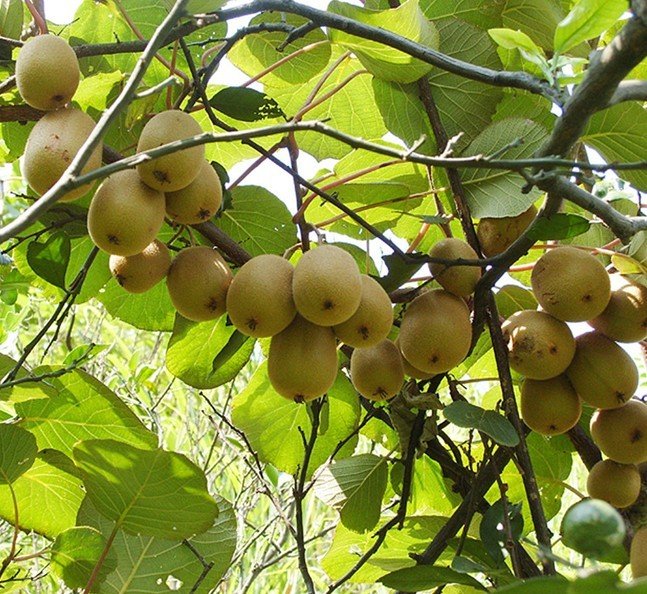
The kiwi fruit was first found growing in China, where it was known by the name “Yang Tao”. At the beginning of the 20th century, missionaries brought the fruit to the island of New Zealand, where it received it’s name “kiwi” after the small flightless bird native to the island. Today, many of the world’s kiwis are still grown in New Zealand, as well as in southern Europe, Asia, South America and the United States.
Kiwi’s are oblong and border on tiny, although a few of them grow up to about 3 inches long. The fuzzy skin is edible, but most people prefer peeling before consumption. The outside is russet-brown and inside is a brilliant green. Inside each piece of fruit are dozens of deep purple to black edible seeds.

Ensure they are cleaned with cold water prior to eating. For an interesting taste, try eating one with its skin. If you don’t wish to peel the fruit, cut one in half, and similar to the way one eats an avocado, spoon out the fruit.
This fruit is an excellent source of dietary fiber.
Kiwi fruit are high in аntiоxidаnts, which help neutralize free radicals in the body that can lead to any range of health problems including cancer. One kiwi fruit contains 1.5 times the daily recommended dose of vitamin C, a primary аntiоxidаnt that experts say can help boost the immune system, prevent heart disease, boost eye and skin health and improve overall wellness. Eating a kiwi is an easy and delicious way to get your daily intake of vitаmin C. Kiwis also contain the important antioxidant vitamin E, which can also help prevent sickness and keep your heart healthy.







